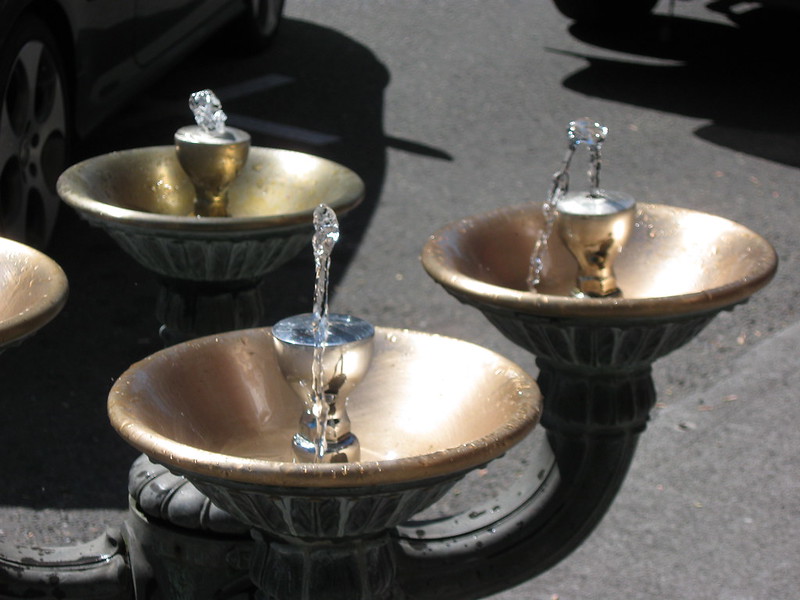
As we indicated in earlier posts, urban life before the late 1800s could be nasty, brutish, and short, especially for the poor, who lived with recurring plagues and unbelievable stench. Trash was dumped in the streets along with horse droppings. Poor families lived in crowded, unventilated tenements and shared outhouses. Little wonder that the wealthy had second homes where they could flee in the summer when the heat and smells were at their worst.
Add to these problems drinking water. This most basic requirement of human life was supplied to most urban neighborhoods by community wells, served by a manual pump. The water was occasionally contaminated by the wastes from the outhouses and droppings on the street. And even when it wasn’t, it required that families tote buckets back to their apartments and up the stairs. (Fetching water was a task often performed by children.) For the wealthy, there were private companies that drew water from ponds in the country and delivered it to their homes. But these services were expensive and unreliable. Clearly, a better system was needed.
In the early 1800s, several cities tried creating public water systems to deliver water from distant water supplies through aqueducts to the city. A few, like Baltimore, invited private companies to try their hands at this business. But private companies usually failed for lack of capital. And even public water systems had only limited success.
In the late 1800s two things turned the desire for clean water into a tidal wave of construction. First was the discovery of germ theory, which convinced public officials that clean water was a key to controlling deadly diseases like cholera. Second was the maturing of capital markets, which gave cities the financial means to build massive water systems along with sanitary sewers. The result is that, in the space of a few decades, one city after another created water systems that piped clean, filtered water from distant reservoirs into houses and businesses.
Supplying clean drinking water was almost entirely the province of local and state governments until the 1970s. If the federal government had a role, it was in building dams and settling disputes over water rights. That changed somewhat in 1974, when the federal Environmental Protection Agency was given the authority to set quality standards and take legal action against local water systems that didn’t meet them. The result: Clean drinking water got even cleaner and safer.
The creation of dependable clean water systems is one of our greatest and least recognized urban accomplishments. Unrecognized, that is, until something terrible happens, as occurred in Flint, Michigan in 2014. (It happened because state-appointed officials, in an effort to save money, changed the water supply.) Such incidents are exceedingly rare, and hundreds of millions of Americans can trust the safety of their drinking water. For this, we can thank government.
More information:
https://en.wikipedia.org/wiki/History_of_municipal_treatment_of_drinking_water
https://www.iwapublishing.com/news/brief-history-water-and-health-ancient-civilizations-modern-times
Give the credit to: local governments 80%, state governments 10%, federal government 10%
Photo by D Coetzee licensed under Creative Commons.
[…] we’ve seen, many of the things we look to government for today—clean drinking water, waste disposal, public health, fire protection, and so on—became government obligations only in […]